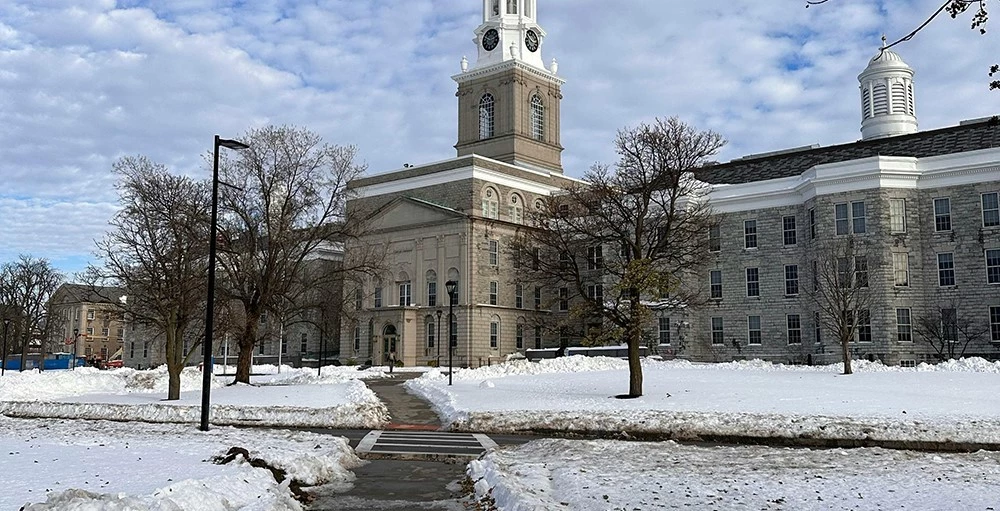Student loan debt is an ongoing crisis in America. In just one quarter between the end of 2018 and the start of 2019, it grew $29 billion.1
An estimated 44 million Americans carry student loan debt, and 10% or more of those debts are delinquent or in default.2
The cost of college has ballooned in recent years. In 2009, a year of private college cost an average of $38,720.
By 2019, that cost had skyrocketed to $48,510 a year, an increase of 25% in just a decade.3
Because of this, the average student leaves college with $29,900 in debt.2
Salaries are not keeping pace with the rising cost of college, making it more difficult for graduates to stay current on student loan payments and all their other living expenses.
Often, student loans are the first thing on the chopping block when not all payments can be made. This may be because students, and even their parents, frequently do not understand the loans they have taken or how a default will affect their futures.
48% of borrowers who graduate from for-profit colleges default on their loans within 12 years. That’s nearly half.
Nonprofit and public college graduates fare better, but the numbers are still disturbing – 14% and 12%, respectively.2
In 2018, 9 out of 10 students and parents failed a quiz about student loan debt. (CNBC) Borrowers lack a basic understanding of the debt they are taking on. Almost half don’t even know what their payments will be after graduation.4
The key to reducing student loan defaults is financial education. Teaching students about debt before they borrow will help them borrow more responsibly.
The Financial Literacy and Education Commission (FLEC)5 issued a report emphasizing the need for financial literacy among college students to combat the student loan debt crisis. In it, they list five best practices for financial education in colleges.
1. Provide clear, timely, and relevant information to inform student borrowing.
It is important to provide relevant information to each individual.
Generalized advice tends to be less effective, as a person may not see how it pertains to their life.
Financial education should be customized to the individual.
2. Effectively engaging students in financial literacy and education.
Gaining participation from busy college students can be difficult.
Creating a useful financial literacy program means finding ways to attract students through online classes and game-based learning.
3. Targeting different student populations
Students come from various backgrounds, making it important that information is tailored to the individual.
Some students are parents or have mortgages already, and ages can vary widely.
4. Communicating the importance of graduation and major on the repayment of student loans.
Financial stress can cause students to drop out of school.
Unfortunately, not graduating can lead to an increased chance of default, even though the student avoided extra costs by leaving school.
Graduating is a good first step to paying off student loan debt.
To learn more about how offering a financial wellness program can affect graduation rates, check out Do Financial Literacy Programs Increase College Graduation Rates?
5. Preparing students for financial obligations upon graduation.
Financial education in college lays the groundwork for financial life in adulthood.
Student loan debt is often the first financial experience students have.
It is important to create a thorough understanding at that level to ensure success with other finances later in life.
With the cost of college continuing to rise, student loan debt is not going away. Focusing on financial education helps reduce the skyrocketing default rate.
One study in Massachusetts showed that 38% of students with low financial literacy underestimated what their future payments would be.
This can make them vulnerable to unexpected shocks when they begin repayment.
Financial literacy makes students almost 20% less likely to underestimate their payments.6
The federal government recognizes the relationship between financial literacy and student loan defaults, which is why a financial counseling session is required for borrowers and has been for more than thirty years.
But a single counseling session is not effective enough. 32% of students do not even remember their counseling session.4
Financial literacy is key to addressing the student loan debt crisis.
A financially literate student is less likely to over-borrow and more likely to understand their loan terms.
They are also more likely to graduate, which is another key element in preventing student loan delinquency and default.
Colleges and universities looking to create successful adults should engage their students in financial wellness education.
1 - https://www.usnews.com/education/blogs/student-loan-ranger/articles/2019-07-31/what-to-know-about-delinquent-student-loans
2 - https://studentloanhero.com/student-loan-debt-statistics/
3 - https://www.cnbc.com/2019/12/13/cost-of-college-increased-by-more-than-25percent-in-the-last-10-years.html
4 - https://cssl.osu.edu/posts/632320bc-704d-4eef-8bcb-87c83019f2e9/documents/2020-scfw-key-findings-report-combined-accessible.pdf
5 - https://home.treasury.gov/system/files/136/Best-Practices-for-Financial-Literacy-and-Education-at-Institutions-of-Higher-Education2019.pdf
6 - https://www.tandfonline.com/doi/abs/10.1080/1351847X.2019.1711435








